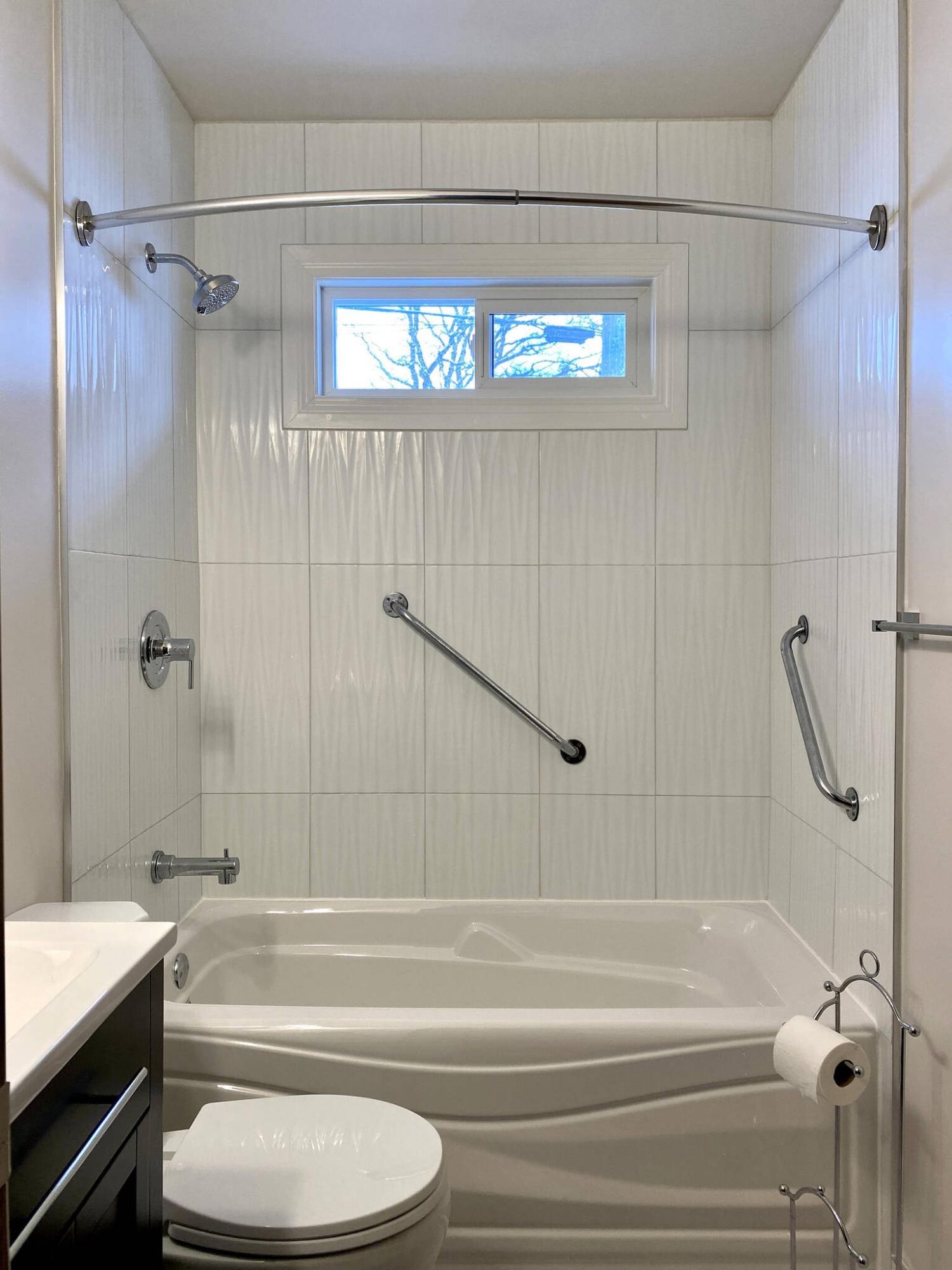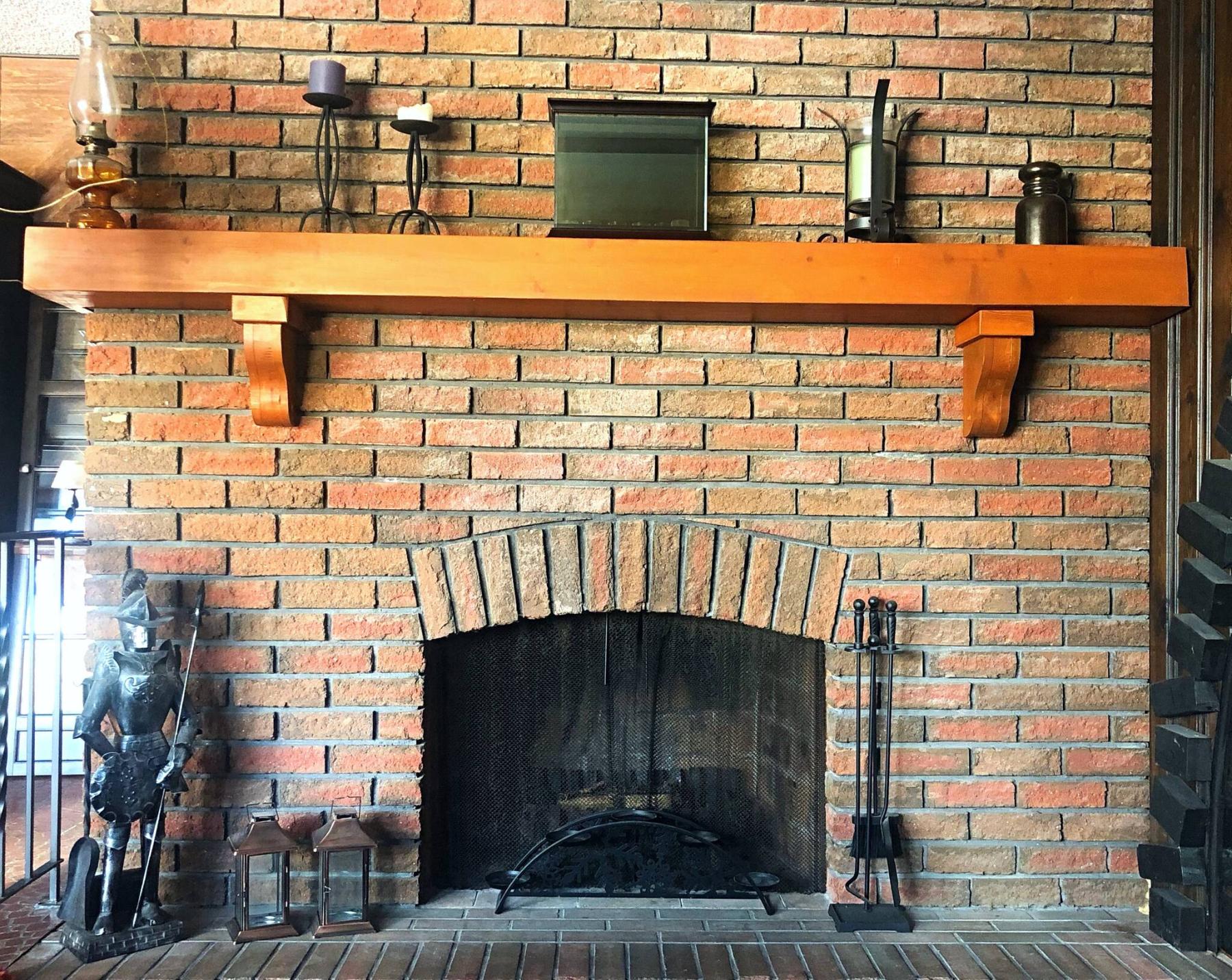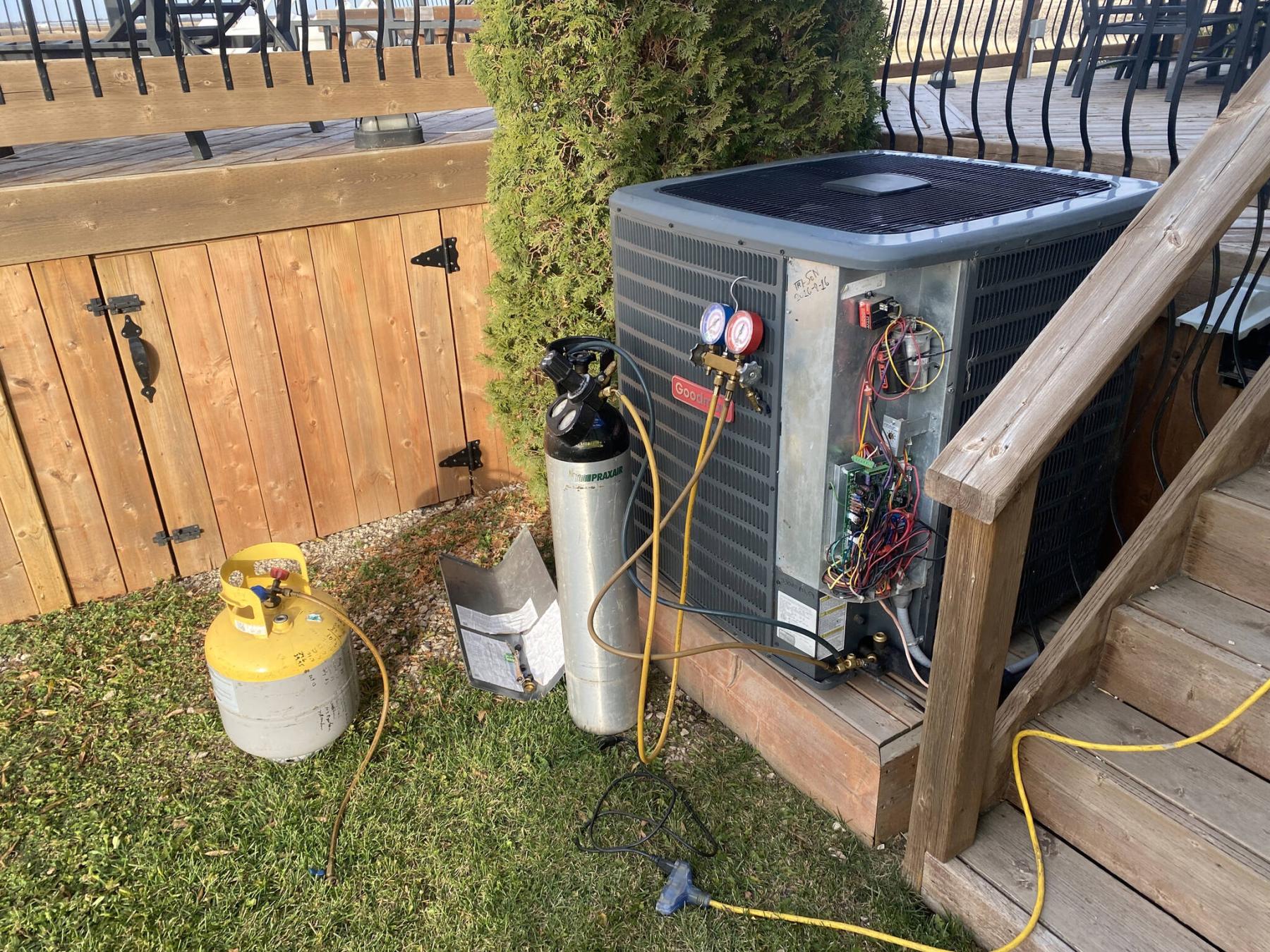Renovation & Design
Renovation & Design
Simple soap and water best bet for cleaning kitchen cupboards
Question: Can you tell me the best way to wash factory painted dark kitchen cabinets please? Rose
Answer: When you speak to most kitchen experts, they typically recommend that you avoid using any product other than dish soap and water, to regularly clean wooden cupboards.
Question: I enjoy your columns very much in the Winnipeg Free Press! I hope you can help me with this problem. I have a big Christmas snowglobe with a lovely, detailed decoration inside the snowglobe. The exterior of the snowglobe is also beautifully decorated. However, the water inside the snowglobe has turned yellow. Can you refer me to someone or a business who can fix this issue? I’m not very handy, but if it is a simple solution, I may be able to tackle it. This snowglobe has a lot of sentimental value and if it can be fixed, I would be very happy and grateful. Thank you so much! Norma
Answer: Calling all Manitoba snowglobe experts! Does anyone have expertise in repairing a snow globe? If so, please send me an email: reenanerbas@outlook.com. If the snowglobe is electrical, you may be able to empty it, and then fill it with fresh, distilled water, using a turkey baster, but this may be risky.
Question: How do I get rid of stains on my white polyester Christmas napkins after they were dried in the dryer?
Answer: Polyester is my favourite fabric, as it is as tough as nails! Since they were dried in the dryer, the easiest, fastest and cheapest solution is to fabric dye the napkins. Choose any colour including white and follow the instructions on the box. Fabric dye may be purchased at some dollar stores, departments stores and craft supply stores. Another option is to boil the napkins for five minutes in a stainless-steel pot with half cup of washing soda and eight cups water. Fabric safe bleach products are also an option.
Avocado storage warning
Storing cut avocados in a container of water is a new trend, but please do not store your avocados this way, as this option can promote bacteria growth. Instead, cut the fruit open and squeeze the exposed area with a little lemon juice. Wrap the fruit using plastic wrap. You can also store avocado slices in the freezer after cutting the fruit and removing the skin.
Company’s coming
I clean my stainless-steel appliances using equal parts olive oil and vinegar. Wipe with a soft microfiber cloth to get rid of streaks and fingerprints. — Lynda
I have an older stainless-steel sink, which was quite stained. I made a paste of equal parts dish soap and baking soda and spread it all over the sink. I then scrubbed it with an S.O.S pad until I covered every inch, then I rinsed the sink, it now looks new again. — Quinton
Clean your coffee grinder using raw rice. Put one-quarter cup of rice into the blender, and blend until it is powder. Dump out the powder and rinse the blender. — Sarah
Sugar cookie hack: roll out your cookie dough between two pieces of parchment paper on your baking sheet, before setting the pan in the fridge to chill. This way the dough is easy to work with and will not stick to your counters. Once chilled, cut out cookies, and remove the excess dough. Since you don’t need to move the cookies before baking, this will help the cookies hold their shape. — Maria
Note: Every user assumes all risks of injury or damage resulting from the implementation of any suggestions in this column. Test all products on an inconspicuous area first.
Have a great suggestion or tip? reenanerbas@outlook.com
Renovation & Design
Baking soda and vinegar will make washing machine sparkle
Question: Do you have a homemade solution for cleaning a front-loading washing machine? Betty
Answer: It is a good idea to check the manufacturer’s guidelines for cleaning the machine. My favourite solution is to pour half cup of baking soda along with four-cups of white vinegar into the machine. Run the machine with a load of towels. Washing soda as a substitute for baking soda will leave you with an even better finish, but it is sometimes difficult to find in stores.
Question: What can I do to reduce the frizz and static of my hair during winter months? Thank you, Louise
Answer: Using a piece of aluminum foil, smooth your hair. You can also use a fabric softener sheet in the same manner. Extra tip: If your fabrics are clinging to you, swipe them with a wire hanger.
Question: Is a ceiling fan meant to cool or heat a room? When purchasing a fan what should I look for in terms of blade length?
Answer: A good quality ceiling fan can cool a room, eight degrees or more, not by lowering the temperature of the room, but by making the room feel cooler. In the same way, when a fan is reversed the room will feel warmer because as the air is distributed, hot air rises.
Fan blades should be between 52 and 42 inches. The larger the room, the longer the blades should be.
Feedback worth noting
Re: Make boxed pancakes taste homemade
I never use boxed pancakes because I have a super easy recipe used by my whole family. I love fluffy pancakes and have three tips. Don’t over stir the batter when mixing, and let the batter sit for a few minutes so the baking powder starts working. Try not to disturb the batter too much when scooping it out onto your preheated griddle.
Jean’s Fluffy Pancakes
1 1/3 cups all-purpose flour (or a combination of white and whole wheat)
3 tsp. baking powder
1/2 tsp. salt
3 tbsp. sugar
1 egg
1 1/4 cups milk
3 tbsp. melted butter or vegetable oil
1/4 tsp. vanilla
Stir flour, baking powder, salt and sugar together. Beat egg thoroughly, add milk. Make a well in the centre of dry ingredients; slowly add the egg-milk mixture. Add melted butter and vanilla. Stir quickly until ingredients are just mixed and batter is still lumpy in appearance. Drop by one quarter cup onto the hot griddle. Cook until pancakes are filled with bubbles and under surface is golden brown. Flip and brown bottom.
We usually cook a double batch, so we have some for freezing and toasting. My grandkids enjoyed these as smaller (silver dollar) pancakes made by their parents. An easy start to toddler breakfast on busy mornings. — Jean
Bring on the Holiday Decorating!
I use zip ties or clothes pins to hang Christmas lights outside. They are cheap, easy to use and don’t leave marks. — Elmer
I utilize garden tomato cages decorated with mini-Christmas lights. I turn them upside down so that they look like mini trees. I have them, why not use them to line my entire driveway? — Marge
Use old Christmas decorations and secure them to an old sweater, to create your entry into an ugly Christmas sweater competition. — Louise
Use pieces of cheap orange, black and red construction paper to decorate your white fridge to look like a snowman. — Louise
In the bathroom, pile three rolls of towel paper, one on top of the other. Place a toque on the top roll. Glue eyes, and an orange nose onto the top roll, to look like a snowman. Cut out black circles for the buttons and the mouth, glue them to the rolls. Use pipe cleaner for the arms. — Louise
Tie one red ribbon, the length of your door, and one ribbon around the width of the door to intersect in the middle. Add a giant bow in the middle to look like a wrapped gift. This inexpensive and easy trick makes a really, big showstopper. — Adam
Note: Every user assumes all risks of injury or damage resulting from the implementation of any suggestions in this column. Test all products on an inconspicuous area first.
Have a great suggestion or tip? Email reenanerbas@outlook.com
Renovation & Design
Lower relative humidity in home to reduce moisture
Questions: I was hoping you would be able to guide me through my current home dilemma. Recently, my husband was looking behind our TV stand, thinking something had been shoved behind it. He noted that the flooring behind the stand was covered in moisture. To give you some perspective, the TV stand sits against an exterior wall of the house. There are no windows on this wall. The moisture appears to only sit near where the floor meets the wall, directly under the TV. We’ve wiped it and dried it as best as we can, but the moisture appears to return. I’m certain it’s linked to the cold weather. I haven’t noticed the issue near any other wall, and the wall on the outside seems unchanged. The inside humidity is sitting around 50 per cent. What could this be caused by and how do I stop it from happening? Thanks, Ash.
Answer: Moisture inside a home with no apparent reason is almost certainly caused by condensation of air in the home, when it contacts a surface cold enough to condense. The key to eliminating this issue is to maintain a lower relative humidity in the home, and better air circulation, to prevent this from reoccurring.
Despite answering an inquiry of a similar nature from a reader about a month ago, I felt this issue was so important to understand the mechanism behind the mysterious moisture, that I would address it again. The issue of condensation related moisture is definitely increasing in our homes, due to better tightening of the building enclosure, and greater efforts toward energy efficiency. The more airtight our homes become the more issues related to our indoor environment become prevalent.
To start this discussion, we should first address the scientific principles behind indoor air humidity issues. These basic facts tell us that the higher the amount of dissolved moisture in the air, the less temperature drop is needed for it to condense. This is often described as the dew point, which is the temperature at which water vapour will precipitate out from the air. So, a higher relative humidity (RH) inside the home will require a smaller temperature drop, or higher dew point, to form condensation on a colder surface. Maintaining lower RH in the indoor air will make condensation more infrequent, as much colder surfaces will be required for it to happen.
In our homes our daily routines produce a significant amount of moisture that becomes dissolved in the indoor air. This includes cooking, bathing, drying clothes, breathing, cleaning, and other normal daily activities. In older homes, with minimal insulation, poorly sealed windows and doors, and limited air/vapour barriers, this humid air would leak out to the exterior environment. Also, it would normally be replaced with colder, dryer air, which would leak in through the building enclosure in much the same manner. This replacement air, combined with the exfiltration of the humid air, will lower the indoor moisture content of the air. This will lower the RH in the home, preventing excess moisture issues.
In newer homes, or older homes that have been retrofitted with new windows and doors, increased attic and wall insulation, new furnaces, and other upgrades, the building enclosure no longer lets air in and out easily. Because of this, much more of the moisture produced by the occupants stays in the air, significantly raising the RH. As stated above, a higher RH raises the dewpoint, allowing condensation on a surface that is closer to the normal indoor temperature. For your home, this is the cold exterior wall or floor behind the TV stand. That area may be cooler because that location is letting in some cold air infiltration, or simply because it in contact with the cold outside environment. So, when the warm house air hits the floor or wall in that location, it reaches the dew point and condensation occurs on the cold surfaces. That may be happening in other areas, but the moisture may be easily reabsorbed into the air if there is good circulation. Because your cabinet is near the wall, there is limited air circulation, allowing the condensation to remain until it becomes problematic.
One part of the solution may be to pull the TV stand away from the exterior wall, to allow better airflow between the colder wall and the furniture. This may also warm the surfaces slightly, helping to prevent the condensation. Taking off the baseboard and caulking or blowing foam insulation into any gaps between the floor and wall plate can also help by preventing cold air leakage from outside. But, the main course of action to prevent the problem is to lower the RH in the indoor air. Fifty percent RH is way too high in the heating season, at normal room temperature. You will surely see water vapour on your windows in that situation, as well as other areas. Lowering the RH to a normal range of 30 – 35 percent in winter will significantly reduce the chance of a reoccurrence. This can often be accomplished by extended use of exhaust fans and the kitchen range hood, as long as they are all functioning and vented to the exterior. In more serious situations, installation of a heat recovery ventilator (HRV) with a dehumidistat control will allow you to maintain the lower RH simply be setting it accordingly.
Preventing moisture from accumulating behind your TV stand can be accomplished by lowering the RH in the home, which will improve the indoor air quality, overall. Sealing any drafty areas in the outside wall and moving the cabinet away from the wall will also improve air circulation, aiding quick evaporation and reabsorption of any small amounts of condensation that may occur before it causes damage.
Ari Marantz is the owner of Trained Eye Home Inspection Ltd. and a Registered Home Inspector (RHI)(cahpi.ca). Questions can be emailed to the address below. Ari can be reached at 204-291-5358 or check out his website at trainedeye.ca.
trainedeye@iname.com
Renovation & Design
Soap, baking soda and SALT will get pans gleaming
Question: My frying pans are pretty old, and the bottoms are blackened. Is there an easy way to clean them, or are they beyond saving? Thank you, Frankie
Answer: No need to toss usable cookware. Turn the pan upside down and sprinkle the bottom with a liberal amount of salt, baking powder and dish soap. Lay dishcloths on the surface and pour vinegar onto the area. Wait for 15 minutes and scrub with a scrubby cloth.
Question: Can you tell me how to easily clean the oven window?
Answer: While the oven is off, open the door. Sprinkle the window with baking soda. Pour hot water onto the glass and scrub with crumpled up aluminum foil. Wipe with a good quality microfiber cloth.
Question: How can I reduce the mess on my baking sheets when cooking bacon? S.J.
Answer: Double line the pan with aluminum foil to cut down on the mess.
Question: I would like to bake many apple pies to give away at Christmas. Is there a fast way to peel the apples, using a potato peeler? S.J.
Answer: Slice off the top and bottom of the apple. Stand the apple on your counter on one of the sliced sides. Hold your potato peeler against the top section of the apple. Turn the apple continuously, the peel should fall off in one long strip.
Feedback
Re: Pilling
I don’t have a tool to remove pilling on sweaters, so I use a pumice stone. Rub the fabric with the stone and then use a lint roller to pick up the little pills. — Jesse
I use a razor to clean up the pilling on sweaters because I’m too cheap to purchase a pilling tool. By the way, I store the blade of my razor inside a binder clip so that I don’t accidentally cut myself when I’m not using the razor. Joyce
Update Re: Lingering Coffee Smell in Contigo Mug
I used the newspaper solution and stuffed the mug. I left it for 48 hours, not much improvement. I changed the newspaper (which I secured with an elastic band) and left if for a few more days — still not a great improvement. Changed it again and then forgot about it (over a week). Some improvement. Changed it once again and left it for another week, maybe more. The result — I would say the coffee smell and taste has been 98 per cent removed. Persistence prevailed! So thank you very much for your great advice. I am very pleased. Best wishes, Lesley
Bring on the Holiday Baking!
Did you know? The word cookie is derived from Dutch, and it means, little cake.
The most popular cookie in Canada? You guessed it, your favorite and mine the never disappointing chocolate chip cookie!
But…do you know what is even better than homemade chocolate chip cookies? Nutella stuffed chocolate chip sandwich cookies. Bake cookies as usual, cool, and then spread or pipe Nutella on the bottom of one cookie. Add another cookie on top to create a sandwich. Yum!
Prevent gingerbread house pieces from falling apart by holding them together with edible glue. Melt sugar in a pot until brown. Be cautious not to burn the sugar. Dip the edge of each piece in the melted sugar and hold them in place for a few seconds before letting go. Royal icing is another edible glue option.
Storebought, boxed sugar cookie dough will give you the option of adding butter or margarine to the mix. Always choose butter, this will give your cookies a more authentic flavor. Chill dough before rolling and cutting it out, this helps cookies hold their shape.
When baking cookies, begin with room temperature ingredients.
For perfectly even, shortbread cookies, place the dough inside a large, open, sealable bag. Roll out the dough until it is a square, press it into all four corners. Chill in the fridge. Remove from the bag. Slice, or shape cookies, and then bake.
Note: Every user assumes all risks of injury or damage resulting from the implementation of any suggestions in this column. Test all products on an inconspicuous area first.
Have a great suggestion or tip? Email reenanerbas@outlook.com
Renovation & Design
Sauna insulation causes permit issues
Questions: I’m writing you in your capacity as a home inspection expert with a vexing question I hope you can answer. We have hired you in the past to inspect our home, so we have been your clients in the past. I am in the process of building a sauna in the basement of my home and have used an aluminum foil vapour barrier. This product, manufactured by a company called MWS, was ordered online and came in a box with no specs or CGSB certification visible. City building inspectors have refused to sign off on my project because they are apparently unfamiliar with the product. So my question is, does this product, or aluminum foil vapour barrier in general, comply with CGSB standards, and is there a way to prove this to a particularly rule-bound building inspector? If you are able to shed light on this, I would be eternally grateful. I am unable to continue with my project until I resolve it, so many thanks for any advice. Yours truly and with appreciation, Caelum Vatnsdal.
Answer: Proving that your unusual building product meets the intent of the building codes may be possible, if you can get more information. Alternatively, changing the design of the sauna to move it away from an exterior wall may make the requirement for an air/vapour barrier a moot point, and should be an easier solution to your problem.
There may be two solutions for your material compatibility issue, one likely much easier than the first. The first would be to explore more about the foil sheathing you wish to use as the air/vapour barrier. This would likely require fairly exhaustive online research, and even a few phone calls to the distributor or manufacturer to see if you can get any further specs or evidence of laboratory testing. If the product is not made in North America, it may be next to impossible to source that information. If you are able to seek out the manufacturer, they may be able to send you some literature from a reputable testing lab with specs on permeability. If they are similar to the ratings for 6MIL polyethylene, then the building official may be persuaded to allow its use. Otherwise, you may have to use your product in conjunction with the poly, to comply.
Because the sauna does produce significant heat, there are two issues to address when installing it up against an exterior wall in your basement. The first issue will be condensation in the insulated wall cavity inside the foundation. Because of the additional heated air potentially contacting the cold foundation wall, condensation risk is elevated. Because of this, a good air/vapour barrier material inside of the insulation is critical. 6MIL polyethylene sheathing is still the standard material used with conventional batt insulation in this situation. It should do an adequate job of preventing air intrusion into the wall cavity, as long as it is properly sealed around any protrusions, studs, floor joists, and the basement floor. The foil sheathing may not have as low a permeability rating, or may be too easily punctured to provide as good protection.
The other issue with the extra heat from the sauna is possible damage to combustible building materials. If the heat is excessive, it could damage the poly and some sealants over time. This would certainly increase the chances of warm air intrusion into the wall cavity, and the possibility of condensation and moisture damage. I assume that is the reason for your desire to use the foil sheathing, as the reflective properties of the foil may help prevent some radiant heat from entering the exterior wall. Unfortunately, the foil sheathing could have other components that may also be affected by the sauna heat, and may not hold up, even as well as the 6MIL poly. As an alternative, you could talk to the city building official and ask if using both sheathings together, with the foil closest to the sauna wall sheathing, is acceptable. This would not add much additional work or expense, and you would be able to use your online purchased product.
My other suggestion, which may be the simplest to satisfy all parties involved, would be to alter the design of the sauna to prevent the need for an air/vapour barrier, altogether. If the sauna was moved away from the exterior wall, to leave a significant airspace, there would be no need for the poly installation. By not using an exterior insulated wall as one of the sauna walls, there would be no requirement for insulation or an air/vapour barrier. You could still use the reflective foil sheathing and batt insulation, if desired, to keep the heat inside the sauna compartment, without worrying about condensation against the cold foundation wall. There may still be some potential condensation issues on the cooler basement components, but those should be easily solved with better ventilation of the area. That would still be a possibility, even if the sauna was up against the exterior wall, in your current design.
Replacing traditional 6MIL poly air/vapour barrier sheathing with foil sheathing for your new basement sauna may be possible, but would require proof from the manufacturer that it is as good and durable as the poly, which may not be easy to obtain. Moving the sauna away from the exterior wall, and allowing airflow all around the unit, should negate the need for any air/vapour barrier and may be a simpler and more practical solution to your dilemma and allow a quicker completion of your project.
Ari Marantz is the owner of Trained Eye Home Inspection Ltd. and a Registered Home Inspector (RHI)(cahpi.ca). Questions can be emailed to the address below. Ari can be reached at 204-291-5358 or check out his website at trainedeye.ca.
trainedeye@iname.com






